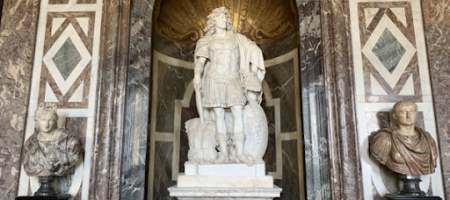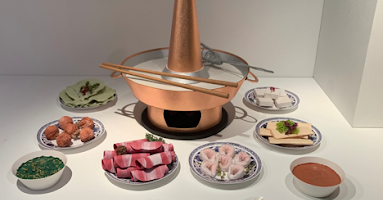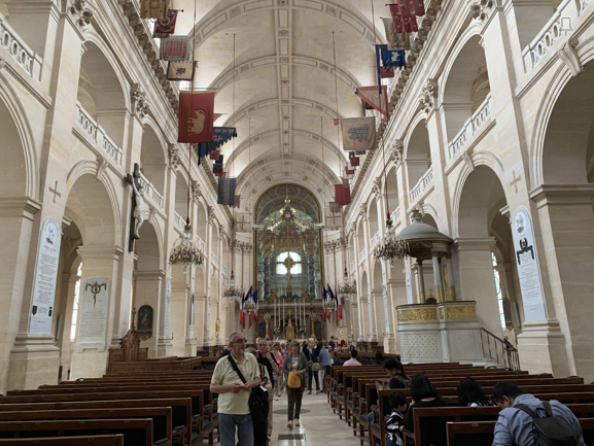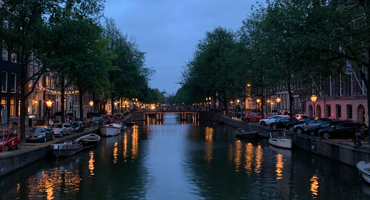France | Day Trip to Versailles
By Jason Vu
Along with the regular 3-day weekends of our program, our last week included a 5-day long break for us to travel and explore all on our own. On the first day of this break from class, a group of friends and I decided to go on a day trip outside of Paris to the famous Palace of Versailles. Although Versailles is one of the most well-known places in all of France, I didn’t realize how far it was from Paris until we got on the hour-long train ride! Nonetheless, we eventually made it to the small town named after the grand palace.
Arriving at the entrance courtyard to Versailles, we were met with a long line of at least two hundred people. While this seemed quite daunting especially with the French heat wave upon us, my friends and I braved the long line to enter into the former seat of the French monarchy. Luckily for us, the line moved quite quickly and within an hour, we were at the security checkpoint to enter in.
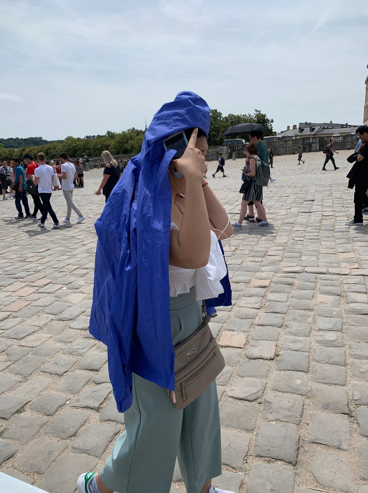
My friend, Allyson, trying to avoid the sun in line for the entrance
Upon entering Versailles, we were introduced to the estate’s spectacular history. Originally an old hunting lodge constructed by King Louis XIII, his successor Louis XIV decided to expand the lodge into a palace fit for a king. Versailles would not just be any palace though; Under Louis XIV and his successors, the palace would serve as the central seat of government from the mid-17th to late-18th century. As such, it would house not only the King but much of the French nobility who were eventually ousted during the French Revolution.

Statue of the “Sun King” Louis XVI, first king to reign from Versailles
Our tour of Versailles began at the royal chambers on the palace’s right side. These included the rooms of King Louis XIV, Queen Maria Theresa of Spain, and the rest of the royal family. In addition, we also got to see the chambers of some of the King’s mistresses. Each room was more ornate and gaudy than the last, with great portraits and grand sculptures decorating the entire area of the room. Once my friends and I finished going through the main rooms, we headed out to the courtyard in front of the palace’s frontside.

Front of the Palais de Versailles
After taking some time to admire the palace’s architecture, we stepped back inside to see one of the main attractions at Versailles—the Hall of Mirrors. Known as “La Grande Galerie” in French, the hall was filled with grand frescoes lining the ceiling and glass mirrors meant to reflect light from the windows into the hallway. The room was filled with tourists when I got there, but I managed to grab a picture that captured most of the halls extravagant beauty. Given that it was designed to show off the glory of France, I would say that the Hall of Mirrors, along with the rest of Versailles in fact, does quite well in fulfilling its role.

“La Grande Galerie” or the Hall of Mirrors at Versailles
Jason studied abroad in France in Summer 2019. https://ieo.ucla.edu/travelstudy/GlobalStudies-France/


